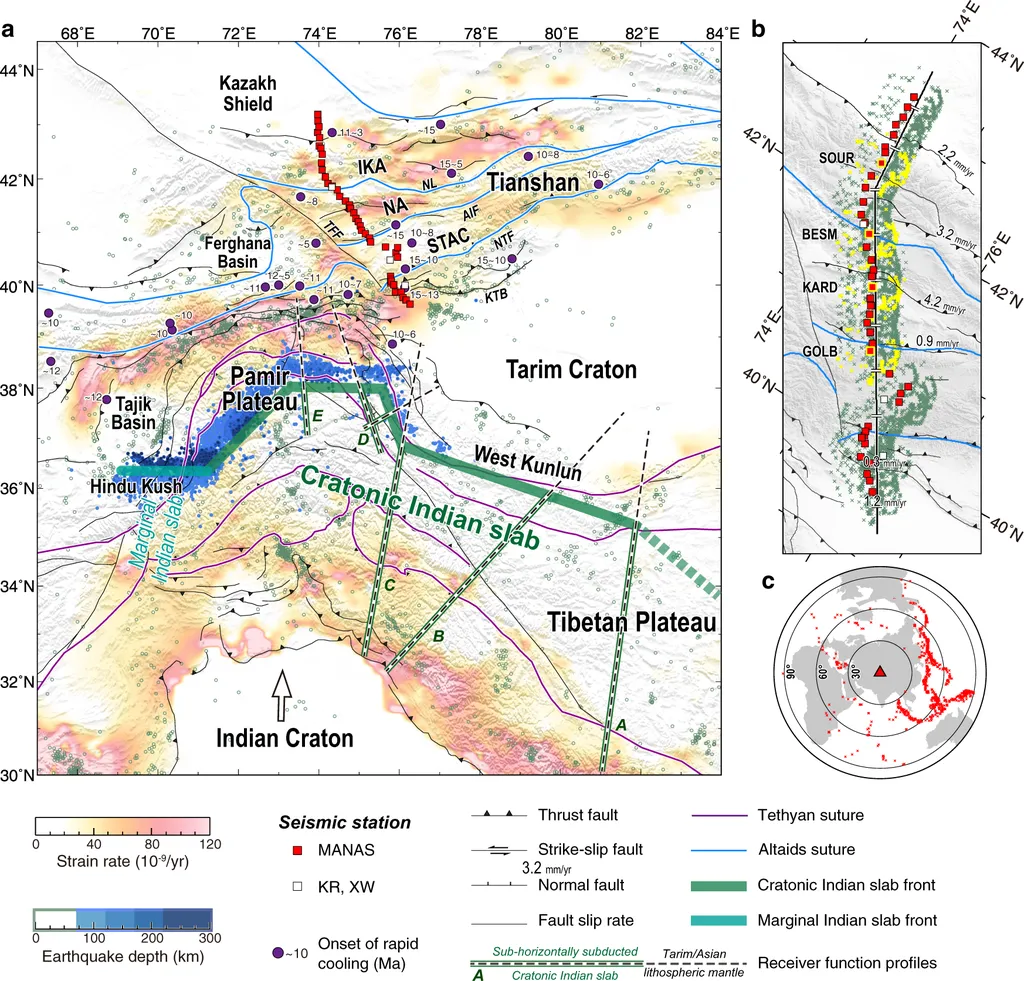In the heart of Central Asia, a mountain range is defying conventional wisdom about how continents collide and mountains form. The Tian Shan orogen, a vast expanse of rugged peaks, is revealing secrets that could reshape our understanding of continental deformation and, by extension, the energy sector’s approach to resource exploration.
At the forefront of this discovery is Xi Xu, a researcher from the College of Geophysics and Petroleum Resources at Yangtze University. Xu and his team have published a groundbreaking study in *Nature Communications* (translated as “Nature Communications”), challenging long-held assumptions about how mountains form within continents.
The team’s findings suggest that the mode of intracontinental deformation—whether it’s discrete subduction or distributed shortening—is controlled by the composition of the lower crust and the depletion of the mantle lithosphere. “We’ve found that the distribution of magnetic-indicated crustal iron can help us infer the composition, density, and rheology of the continental crust and lithospheric mantle,” Xu explains. This insight is crucial because it directly impacts how we understand the preservation and destruction of Earth’s continents, including long-lived cratons.
For the energy sector, this research could be a game-changer. Understanding the composition and structure of the continental lithosphere can provide valuable insights into the formation and location of hydrocarbon reservoirs. “If we can predict the mode of deformation, we can better understand the geological history of a region and make more informed decisions about where to explore for resources,” Xu notes.
The study’s implications extend beyond the energy sector. By revealing the mechanisms behind intracontinental mountain building, researchers can better understand the processes that shape our planet’s surface. This knowledge is vital for assessing geological hazards, managing natural resources, and even mitigating the impacts of climate change.
The research team’s findings are based on high-resolution aeromagnetic imaging and geophysical-geodetic observations, integrated with thermomechanical collisional models. Their work demonstrates that vertically coherent pure-shear shortening dominated the active Tian Shan orogen, a process that does not involve continental subduction or underthrusting.
“This study opens up new avenues for research in the field of tectonics and geodynamics,” Xu says. “It challenges us to rethink our understanding of continental deformation and the processes that shape our planet.”
As the energy sector continues to evolve, the insights gained from this research could prove invaluable. By providing a deeper understanding of the Earth’s lithosphere, Xu and his team are paving the way for more informed decision-making in resource exploration and management. The implications of this work are far-reaching, and the potential benefits are substantial. As the world grapples with the challenges of climate change and resource depletion, the need for innovative solutions has never been greater. This research offers a glimpse into the future of geological exploration and the critical role it plays in shaping our planet’s destiny.

